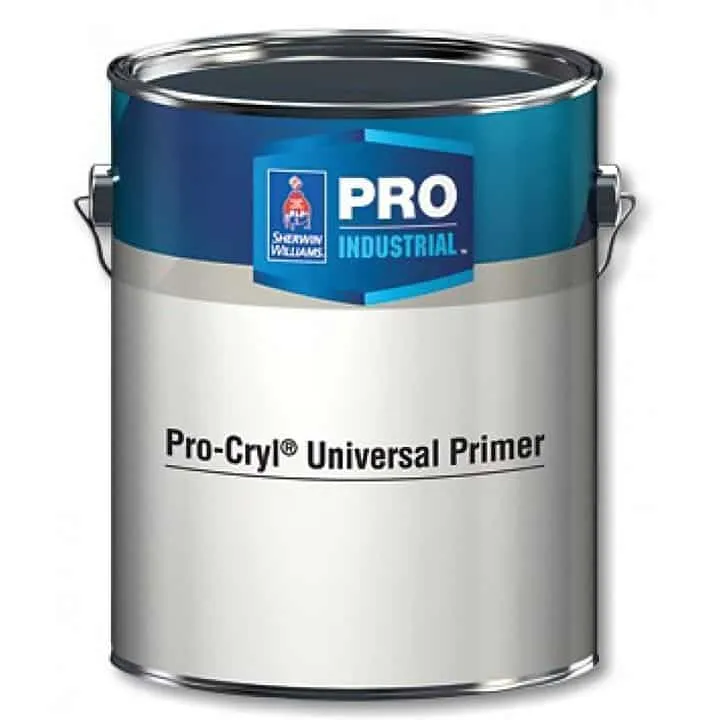No products in the cart.
Return To ShopMetal Surface Universal Acrylic Primer
This self cross-linking acrylic primer is designed for construction and maintenance applications and is engineered for surfaces where rust and corrosion resistance is critical. Pro Industrial Pro-Cryl Universal Primer is a water-based alternative to solvent-based metal primers. It can be used on all bare steel, aluminum and galvanized substrates (when any oils are removed) and is ideal for structural steel, machinery, piping or equipment found in schools, hospitals, hotels, commercial buildings and industrial sites. With a unique formulation that crosslinks for tighter film formation, it provides better resistance to moisture and long-term corrosion resistance and the ideal foundation across a wide variety of interior and exterior end-uses.
It can be used under a wide range of acrylics, alkyds, epoxies and urethanes – for easier protection and maintenance in high-performance applications. It comes in 1 gallon and 5 gallon containers in off white, red oxide and gray colors. Not designed for floors.
Pro-Cryl is a great metal primer when used with our Cool Coat Thermal Barrier Paint.
PRIMER:
None required
TOPCOAT:
Many products are suitable as topcoats including a wide range of acrylics, alkyds, epoxies and urethanes.
Where is Pro Cryl Metal Surface Primer typically used?
- Structural steel, machinery, piping or equipment, metal roofs and walls
- Doors and joints, handrails, bollards, beans and columns
- Schools, hospitals, hotels, commercial buildings and industrial sites.
Why Pro Cryl Metal Surface Primer?
- Single-component, rust-inhibitive primer for steel, aluminum, and galvanized steel
- Recommended when a corrosion-resistant primer is required
- Alternative to conventional solvent-based primers
- Accepts all acrylic, alkyd, urethane, epoxy topcoats – solvent and water base
- Early moisture resistant
- Quick dry to recoat time for faster project turnaround
- Low temperature application down to 40F
- Available in red-oxide, gray and off-white
- Acceptable for use in USDA-inspected facilities
- Complies with SCAQMD, CARB, OTC and LEED 09 requirements
